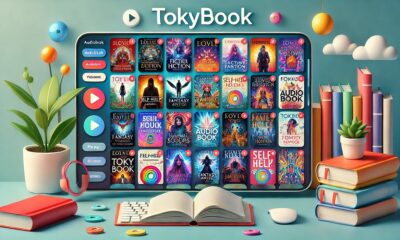GUIDE
Strands Clues: Unlocking the Secrets Behind Mystery Solving

Mysteries, whether in literature, real-life investigations, or puzzles, often revolve around deciphering intricate clues. Among these, strands clues hold a special significance. Representing interconnected pieces of information, strands clues are pivotal in unraveling complex problems.
This comprehensive guide dives deep into the concept of strands clues, exploring their role, decoding techniques, and practical applications in diverse scenarios. Whether you’re a mystery enthusiast or a professional investigator, understanding strands of clues can sharpen your analytical skills and problem-solving abilities.
What Are Strands Clues?
Strand clues refer to interconnected hints or pieces of information that, when pieced together, form a complete picture or lead to a solution. Much like strands of thread woven into a fabric, these clues rely on their interrelations to provide clarity.
Key Characteristics of Strands Clues:
- Interconnected Nature: Each clue contributes to a larger narrative.
- Sequential Discovery: Often requires following a logical progression.
- Multifaceted: This may involve textual, visual, or contextual elements.
- Interpretive: Encourages critical thinking and analytical reasoning.
Their complexity makes strands clues both challenging and rewarding to solve.
The Importance of Strands Clues in Mystery Solving
Strands clues are not just limited to fictional mysteries; they play a crucial role in various real-world contexts, from investigations to decision-making.
Why Strands Clues Are Significant:
- Encourage Analytical Thinking: Promote logical reasoning and attention to detail.
- Facilitate Connections: Help in correlating seemingly unrelated information.
- Drive Narratives: Propel stories forward in books, games, and movies.
- Aid Real-World Problem Solving: Used in detective work, forensic analysis, and research.
Their versatility ensures they remain a cornerstone in both entertainment and practical scenarios.
How to Decode Strands Clues Effectively
Step-by-Step Guide:
- Gather Information: Collect all available clues, ensuring no detail is overlooked.
- Identify Patterns: Look for recurring themes, symbols, or sequences.
- Establish Connections: Analyze how individual clues relate to each other.
- Validate Hypotheses: Test theories by cross-referencing clues.
- Refine the Narrative: Adjust your interpretation based on new insights.
By following these steps, you can systematically approach and decode strands clues with confidence.
Types of Strands Clues
Strand clues can manifest in various forms, each requiring unique interpretation skills.
1. Visual Clues
- Hidden symbols, diagrams, or coded imagery.
- Often require keen observational skills.
2. Textual Clues
- Embedded messages in written text or dialogue.
- Can involve anagrams, acronyms, or cryptic hints.
3. Contextual Clues
- Relies on understanding the broader scenario or environment.
- Frequently used in real-life investigations.
4. Sequential Clues
- Require solving in a specific order to unlock subsequent hints.
- Common in treasure hunts or escape rooms.
Understanding these types enables a more targeted approach to solving strands of lues.
Practical Applications of Strands Clues
Strands clues aren’t limited to entertainment—they have practical implications in various fields:
1. Criminal Investigations
- Linking evidence to reconstruct events or motives.
- Example: Analyzing forensic data to solve a case.
2. Research and Analysis
- Identifying patterns in data to conclude.
- Example: Tracing connections in scientific studies.
3. Puzzle Design
- Used in games, escape rooms, and treasure hunts to enhance engagement.
- Example: Designing challenges that require critical thinking.
4. Education and Training
- Teaching problem-solving through interconnected challenges.
- Example: Case studies in law or business schools.
These applications highlight the relevance of strands of clues beyond traditional settings.
Tips for Solving Strands Clues
To excel at decoding strand clues, consider these tips:
- Pay Attention to Details: Small elements often hold significant meaning.
- Think Creatively: Approach clues from multiple perspectives.
- Organize Clues: Use diagrams or lists to track connections.
- Collaborate: Work with others to brainstorm and share insights.
- Stay Patient: Complex clues may require time and persistence.
Applying these strategies ensures a more effective and enjoyable problem-solving experience.
Challenges in Decoding Strands Clues
Despite their appeal, strand clues can pose challenges:
- Ambiguity: Some clues may have multiple interpretations.
- Complexity: Interconnections can be intricate and difficult to unravel.
- Time-Intensive: Requires patience and sustained effort.
Acknowledging these challenges prepares solvers for the complexities of strands of clues.
Real-Life Examples of Strands Clues
Strand clues have been used in iconic scenarios to solve mysteries or engage audiences:
1. Fictional Mysteries
- Sherlock Holmes: Piecing together scattered details to solve crimes.
- The Da Vinci Code: Decoding symbols and messages to unravel secrets.
2. Historical Investigations
- The Zodiac Cipher: An unsolved series of cryptic messages from a serial killer.
- The Rosetta Stone: Used to decode ancient Egyptian hieroglyphics.
3. Modern Puzzles
- Escape Rooms: Integrating sequential clues for immersive problem-solving.
- ARGs (Alternate Reality Games): Using strands of clues to create interactive experiences.
These examples demonstrate the enduring allure of strands of clues across contexts.
Conclusion
Strand clues represent a fascinating aspect of mystery-solving, blending creativity with analytical reasoning. Whether you’re navigating a fictional story, solving a puzzle, or tackling real-world challenges, strands clues offer a rewarding experience that sharpens your problem-solving abilities.
By understanding their types, practical applications, and decoding techniques, you can approach strands of clues with confidence and enjoy the thrill of discovery. From literature to investigations, their relevance continues to grow, proving their timeless appeal across generations.
FAQs
What are strand clues?
Strands clues refer to interconnected pieces of information that, when combined, form a complete solution or narrative.
How do I solve strands of clues?
Start by gathering all available clues, identify patterns, and establish connections to decode their meaning.
Where are strands clues commonly used?
They are found in mystery novels, games, criminal investigations, and educational challenges.
What skills are needed to decode strands of clues?
Analytical thinking, attention to detail, creativity, and patience are essential for decoding strands of clues.
Are strands clues always complex?
Not necessarily—some strands clues are straightforward, while others require deeper analysis and interpretation.
Can strands clues be used in education?
Yes, they are excellent tools for teaching critical thinking and problem-solving skills in academic settings.

 BUSINESS8 months ago
BUSINESS8 months agoService Top: Understanding Role, Dynamics, and Consent in Relationships

 TECHNOLOGY7 months ago
TECHNOLOGY7 months agoSSIS 858: Everything You Need to Know

 GUIDE6 months ago
GUIDE6 months agoLookmovie2.to Legit: A Detailed Review of Safety and Features

 FASHION7 months ago
FASHION7 months agoDIY Tips to Customize Your Orange Prom Dress and Stand Out

 GUIDE7 months ago
GUIDE7 months agoTokybook: Your Gateway to the World of Audiobooks

 TECHNOLOGY7 months ago
TECHNOLOGY7 months agoUnderstanding Libgen: The Ultimate Free Ebook Library

 GUIDE8 months ago
GUIDE8 months agoLeague of Graphs: The Ultimate Guide to League of Legends Stats and Analysis

 GUIDE7 months ago
GUIDE7 months agoLook at All Those Chickens: The Story Behind the Viral Meme
















